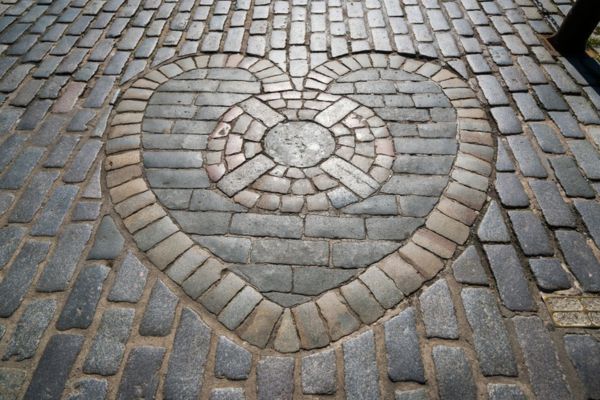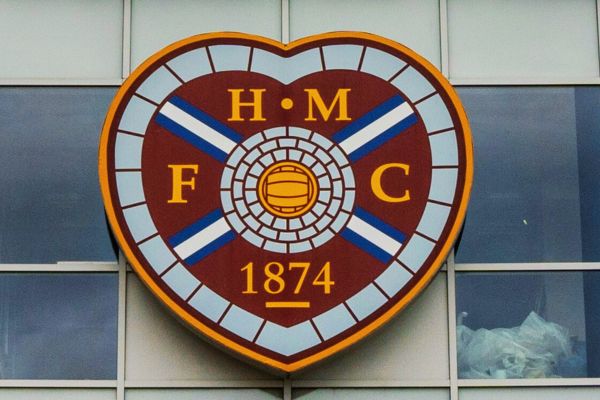Picture this: it’s a cloudy, grey afternoon in Edinburgh, sometime in the 1800s. The kind of day where the sky looks like wet concrete and the air smells faintly of stone and rain. Two men are crouched down on the cobbles of the Royal Mile, carefully placing chunky brick-like stones into the shape of a heart. It’s not a random art project — it’s a marker, laid into the street to remember something grim and forgotten by most. The two men step back, admire their work, and probably don’t realise they’ve just helped shape the future identity of one of Scotland’s biggest football clubs: Heart of Midlothian.
But before we get to the football, let’s rewind a bit. What’s the deal with the heart in the road?
A Heart in Stone – and a Grim Past

That heart-shaped mosaic, if you’ve ever walked the Royal Mile in Edinburgh, is hard to miss. It’s just outside St Giles' Cathedral, worn down from years of footsteps and—oddly enough—spit. Yep, more on that in a sec.
That spot marks the old entrance to the Old Tolbooth, one of Edinburgh’s most notorious buildings. Built in the late 1400s, it was used as a town hall, meeting chamber, and for a long stretch, as the city’s prison. Not a nice one, either. Think torture, overcrowding, public executions... cheerful stuff.
By 1817, the Old Tolbooth was finally knocked down. The city eventually laid the mosaic in 1860 to mark where the entrance once stood. And that heart? It was more than just a shape. It was a symbol — one locals would spit on, originally as a sign of disgust toward the brutal justice that used to happen there. These days, people still spit on it, but now they say it brings good luck. Scottish traditions, eh?
From Prison Yard to Pitch
So how does this grim bit of history connect to football?
In 1874, a group of lads in Edinburgh formed a football club. When it came time to pick a name, they looked to something with local meaning and a bit of romantic weight. The Heart of Midlothian — already known to anyone in Edinburgh because of the old prison and the mosaic — was perfect. But the name had also gone beyond Edinburgh thanks to a certain famous writer.
Sir Walter Scott, who was born in the city, had written a novel in 1818 called The Heart of Midlothian, named after the prison. The book became a hit and helped carry the name far beyond Scotland’s borders. So, when the football club was formed, that connection gave the name an extra sense of identity — both local and literary.

The heart-shaped mosaic was already in the ground by then, and it served as a fitting symbol for the team’s badge — a heart, with the initials HMFC wrapped around it. That badge is now one of the most iconic in Scottish football.
More Than Just a Name

Today, Heart of Midlothian FC, or just Hearts, are one of the biggest clubs in Scotland. They play at Tynecastle Park, and their fiercest rivals are Hibernian, based across the city in Leith. The Edinburgh Derby between the two is one of the most passionate fixtures in British football.
But what makes Hearts stand out — apart from the name and the badge — is that deep historical connection to the city. Not many clubs can point to a heart-shaped mosaic outside a cathedral as part of their origin story. And if you’re ever in Edinburgh, it’s well worth seeing for yourself. Walk the Royal Mile, find the mosaic, maybe even (gently) spit on it for good luck, then head to a Hearts match and see how that symbol lives on, not in stone this time, but in chants, scarves, and the roar of the crowd.
Looking for more football name histories?
Check out these related stories:
The Stadium with a Grim Name – how FC Utrecht’s Stadion Galgenwaard got its name from the gallows that once stood nearby.
The Name the River Delivered – the story behind River Plate, and how a mistranslated name stuck for over a century.
How Nottingham Forest Got Their Name – a club born under the trees of Sherwood Forest, with a name that nods to ancient legends.
Why Is Tottenham Called Hotspur? – the medieval rebel knight behind the name, and how it shaped a North London identity.
